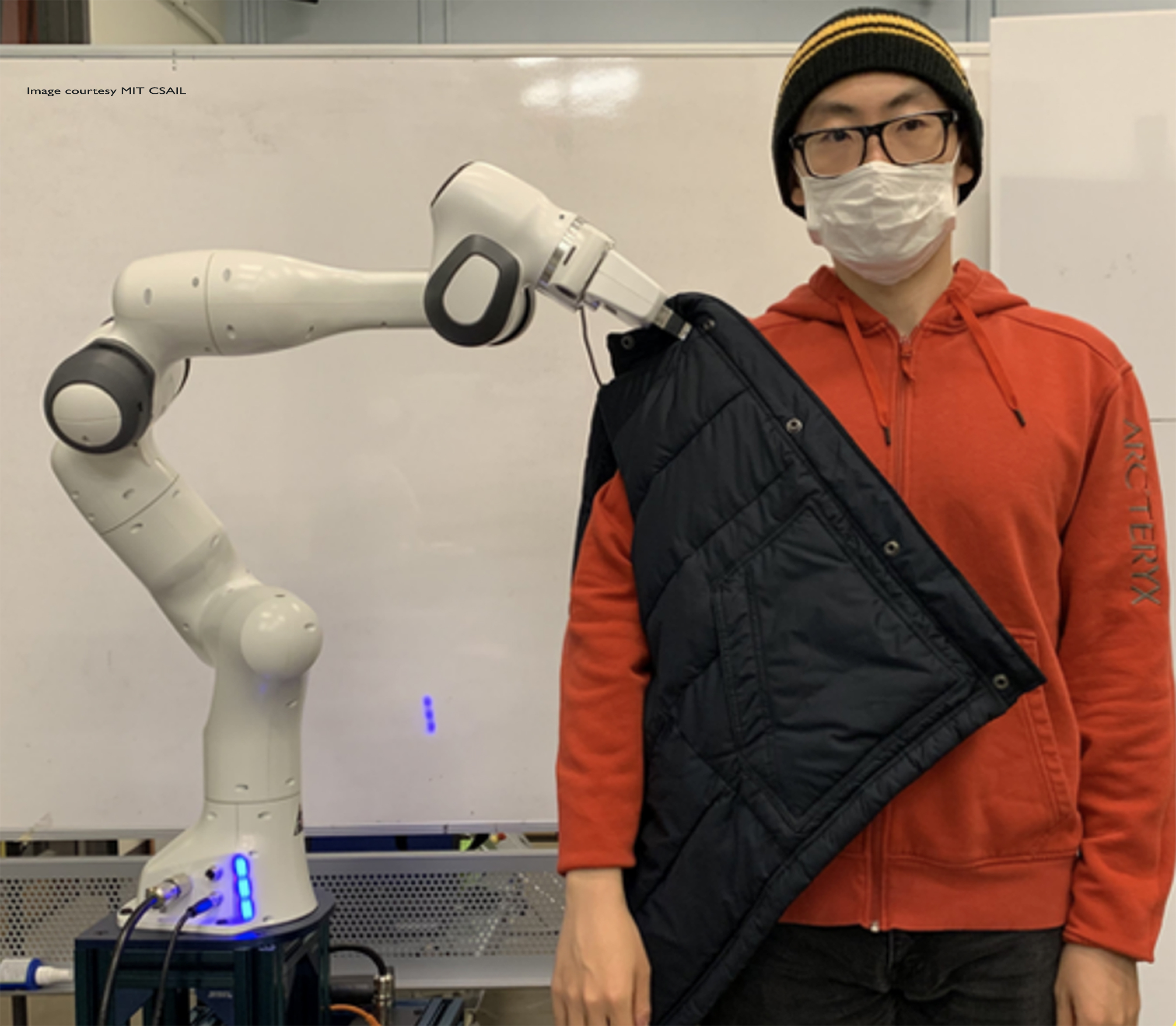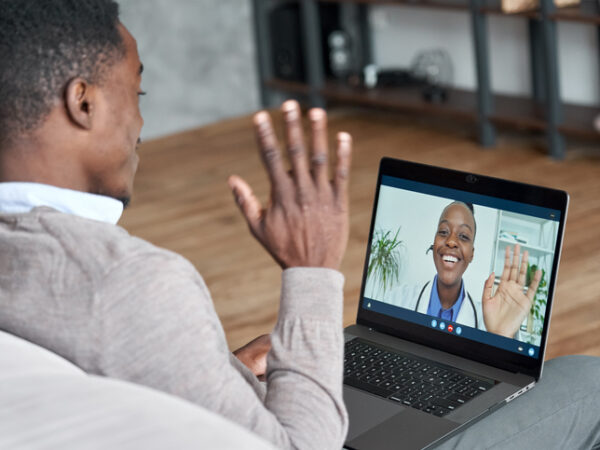With a recent shortage of home healthcare workers and aides, many elderly adults and people with disabilities have encountered difficulty securing the help they need to perform regular tasks of daily living such as bathing and dressing. But using predictive modeling and data gathered from a 3D tracker, robots may one day be able to help people living with disabilities or limited mobility to get dressed safely.
New software, designed by The Interactive Robotics Group at the Massachusetts Institute of Technology, is hoped to predict human movement accurately enough to help a person get dressed without causing injury. A human-aware motion planning algorithm helps address the safety gap in interactions between robots and people.
According to MIT News On Campus and Around the World, the robotic arm designed by the group is currently programmed to help put a vest on a human using a new algorithm to ensure the safety of the person being dressed. With proper modeling of how the human moves, reacts and responds, a robot can more successfully interact with people and assist with daily tasks such as dressing without injury or the robot “freezing” if it overcorrects for safety.
The research has the potential to be applied to a wide range of assistive robotics, helping provide people with physical disabilities a greater sense of independence, along with safety and reliability. As the robot “learns” more about the habits of the human they are interacting with, they are better able to predict reactions and adapt accordingly – for example anticipating when an elderly adult may be getting fatigued and have less physical ability or dexterity.
As the project moves forward, researchers also plan to investigate how people feel about their safety in addition to the physical performance during robot/human interaction. By approaching these interactions using set theory, along with safety constraints, human motion prediction, and feedback control, the work has the potential to allow robots to provide safer physical assistance to elderly adults and people with disabilities.






Add Your Voice
0 Comments
Join the Discussion